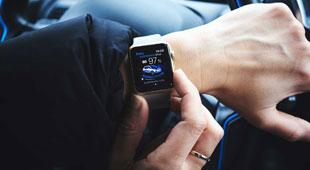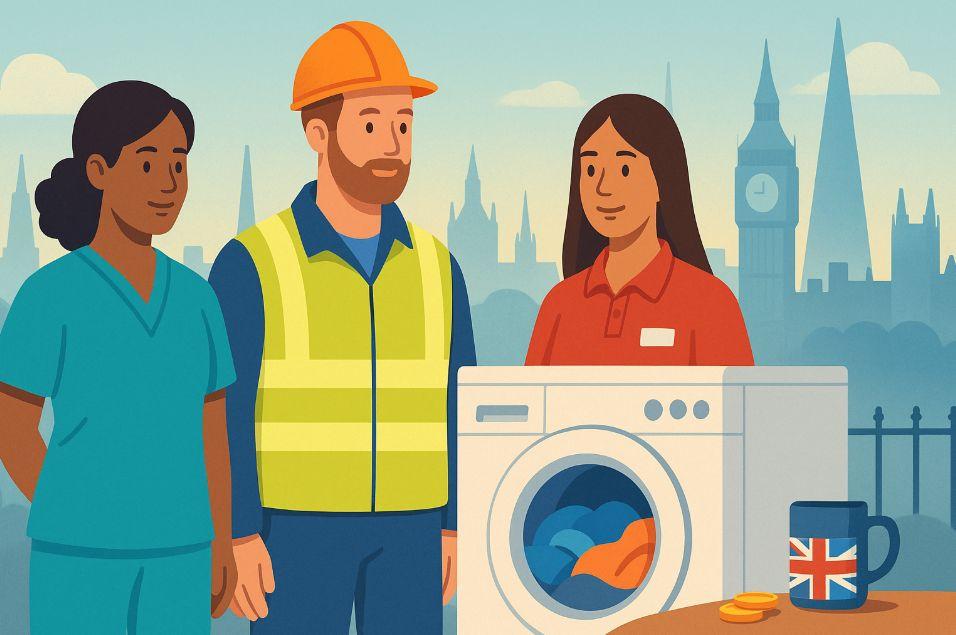If you wear a uniform for work and take care of washing or maintaining it yourself, you may be entitled to a tax refund that many UK workers unknowingly miss out on. Workers in London and across the UK often spend money keeping their uniforms clean from scrubs and supermarket polos to hi-vis jackets and protective overalls without realising HMRC offers financial relief for exactly these costs.
This uniform laundry allowance might look modest when viewed yearly, but when you add multiple years together, the totals can become surprisingly useful. And because HMRC allows backdating, many first-time claimants receive a lump sum that feels like an unexpected bonus. This guide explains everything clearly, helping you understand whether you qualify and how to claim confidently.
What Does HMRC Define as a Uniform for Tax Relief Purposes?

HMRC’s definition of a uniform is straightforward: it must identify your role or protect you in a way that everyday clothing does not. That means uniforms that are branded, industry-specific, or protective in nature typically qualify. For example, a hospitality shirt with a clear company logo, NHS scrubs, engineering overalls, or construction hi-vis jackets all fall under HMRC’s recognised uniform category.
Clothing that can be worn outside work without raising an eyebrow such as plain shirts, trousers, or business attire does not qualify, even if your employer requires it. The important factor is whether the clothing is distinct to your job and whether you are responsible for cleaning or maintaining it. If both are true, your chances of qualifying are high.
Who is Eligible to Claim the HMRC Uniform Laundry Allowance?
Eligibility depends on three main conditions. You must be required to wear a recognisable or protective uniform for your job, and you must handle the cleaning or upkeep of that uniform yourself without receiving money from your employer to cover it. You also need to be someone who pays income tax through the PAYE system.
This means the allowance applies to a wide range of workers from nurses, paramedics, dental staff and care workers to shop assistants, delivery drivers, mechanics, technicians, cleaners, factory workers, and hospitality staff. In London especially, where uniformed roles are widespread, it’s common for eligible employees to simply not know that this relief exists.
How Much Can Workers Claim for Washing Their Uniform?
Here is a simple breakdown of typical allowances:
| Occupation Type | Flat-Rate Expense Allowed | Approx Refund (20% Taxpayer) |
| General workers | £60 per year | £12 per year |
| Healthcare staff | £125 per year | £25 per year |
| Skilled trades / technicians | £100–£140 per year | £20–£28 per year |
While the annual figures appear small, the real advantage comes when workers backdate their claims for up to four years. A nurse, for example, could receive more than £100 in one payment. Retail and warehouse staff typically see £50–£70 when backdated. It’s essentially money returned to you for expenses you’ve already covered.
How Do You Claim the HMRC Uniform Tax Refund?
Claiming is simpler than most people expect. The quickest method is through your Personal Tax Account on HMRC’s website, where you can submit your claim digitally. The online system guides you through each step, making it easy even if you’ve never claimed before.
Another option is to submit a P87 form, either online or through the post, though postal submissions take longer. If you already complete a self-assessment tax return, you can just add your uniform expenses to the employment section. After the first successful claim, HMRC may automatically apply the same relief in future years if your job circumstances stay the same.
What Documents or Proof Are Needed to Make a Claim?

One of the most convenient parts of this allowance is that receipts are not required. HMRC uses flat-rate figures for each job category, so detailed evidence is unnecessary. It is still sensible, however, to keep a copy of your employment contract, uniform policy, or HR documentation that confirms you wear and maintain a uniform. These act as support if HMRC ever needs to verify your claim later.
Can You Backdate Your Uniform Tax Claim?
Yes, and this is where many workers benefit the most. HMRC allows claims for the current tax year plus four previous years. If you haven’t claimed before, backdating can turn a small annual refund into a more meaningful sum.
For example, a retail employee who qualifies for £12 a year could receive over £60 if they backdate their claim. Healthcare and skilled trade workers often receive over £100.
Is There a Difference Between Flat Rate Expenses and Uniform Tax Relief?
There is a difference, though the two are closely related. The flat-rate expense is the fixed amount HMRC assigns to your job type to represent the typical cost of cleaning or maintaining your uniform.
Uniform tax relief is the benefit you receive after that expense reduces your taxable income. Put simply: you claim the flat rate; the tax relief is the money you get back.
Are There Any Online Tools or Services That Help With Uniform Tax Claims?

HMRC’s own online service is the most reliable and cost-effective option. It is free, quick, and secure. There are third-party companies that will process your claim for you, but these services often take a sizeable portion of your refund sometimes 30% to 50%. Most workers with straightforward uniform costs can easily complete the claim themselves without paying commission.
What Are the Most Common Mistakes People Make When Claiming?
Many workers assume they do not qualify because their uniform doesn’t seem “official” enough, when in fact, they do. Others forget about backdating and miss out on several years of refunds.
Some people use paid claim services without realising how much commission is deducted. Errors in job categories or address details can also delay processing, so checking your information before submitting your claim is important.
How Long Does It Take to Receive Your HMRC Laundry Allowance Refund?
Online claims are usually processed within two to six weeks, while postal claims can take slightly longer. Most London-based employees report receiving their refunds in around four weeks, and payments are made either by bank transfer or by cheque depending on the option selected during the claim.
What Are Some Real-life Examples of Successful Uniform Tax Claims?

A London nurse discovered she hadn’t claimed the allowance during her five years of service and received more than £100 after backdating her claim. A supermarket employee who regularly washes branded tops received around £60 for both current and previous years.
A warehouse worker who maintains his own hi-vis gear and safety clothing received £96 after backdating four years. These examples show that even small annual refunds add up.
Conclusion
The HMRC uniform laundry allowance is one of the easiest forms of tax relief available to UK employees, yet it remains one of the most overlooked. If you wash or maintain your own work uniform and your employer does not cover the cost, you are likely entitled to a refund. For workers across London particularly in healthcare, retail, construction, and hospitality this is a simple way to reclaim money you’ve already spent on job-required clothing.
Since claims can be completed online and backdated several years, it’s well worth checking your eligibility. The allowance may be modest annually, but it can create a helpful lump sum when backdated, making it an easy win for any uniformed worker.
FAQs
Can I claim uniform tax relief if I share laundry duties with a colleague or family member?
Yes. As long as you pay for the cleaning even if someone else physically washes the uniform you are eligible to claim the tax relief.
Does HMRC allow claims for dry cleaning or specialist cleaning services?
Yes, but only if the cleaning is necessary for your uniform and you pay for it out of pocket. Specialist or heavy-duty cleaning is treated the same as regular washing when claiming flat-rate expenses.
Can I claim uniform tax relief while on maternity leave, sick leave or career break?
You cannot claim for periods when you were not actively wearing or cleaning your uniform. However, time before and after your break still qualifies within the allowed tax years.
What happens if my job requires multiple uniforms across different roles?
If all the roles fall under the same employer and require similar types of uniforms, you still receive a single flat rate. If different roles have different HMRC rates, the higher rate usually applies.
Can students or apprentices claim the uniform laundry allowance?
Yes. Apprentices, trainees, and vocational students on paid placements can claim if they wear and maintain a required uniform and are taxed through PAYE.
Will the allowance affect my benefits, Universal Credit, or tax code?
No. Uniform tax relief does not reduce your benefits or affect your entitlement in any way. It simply adjusts your taxable income and may temporarily change your tax code to reflect the allowance.
Can I claim uniform tax relief if my employer gives me replacement uniforms but doesn’t cover cleaning costs?
Yes. Receiving free or subsidised uniform items does not affect your right to claim tax relief for cleaning, washing, repairing, or maintaining the items you are responsible for.









Leave feedback about this